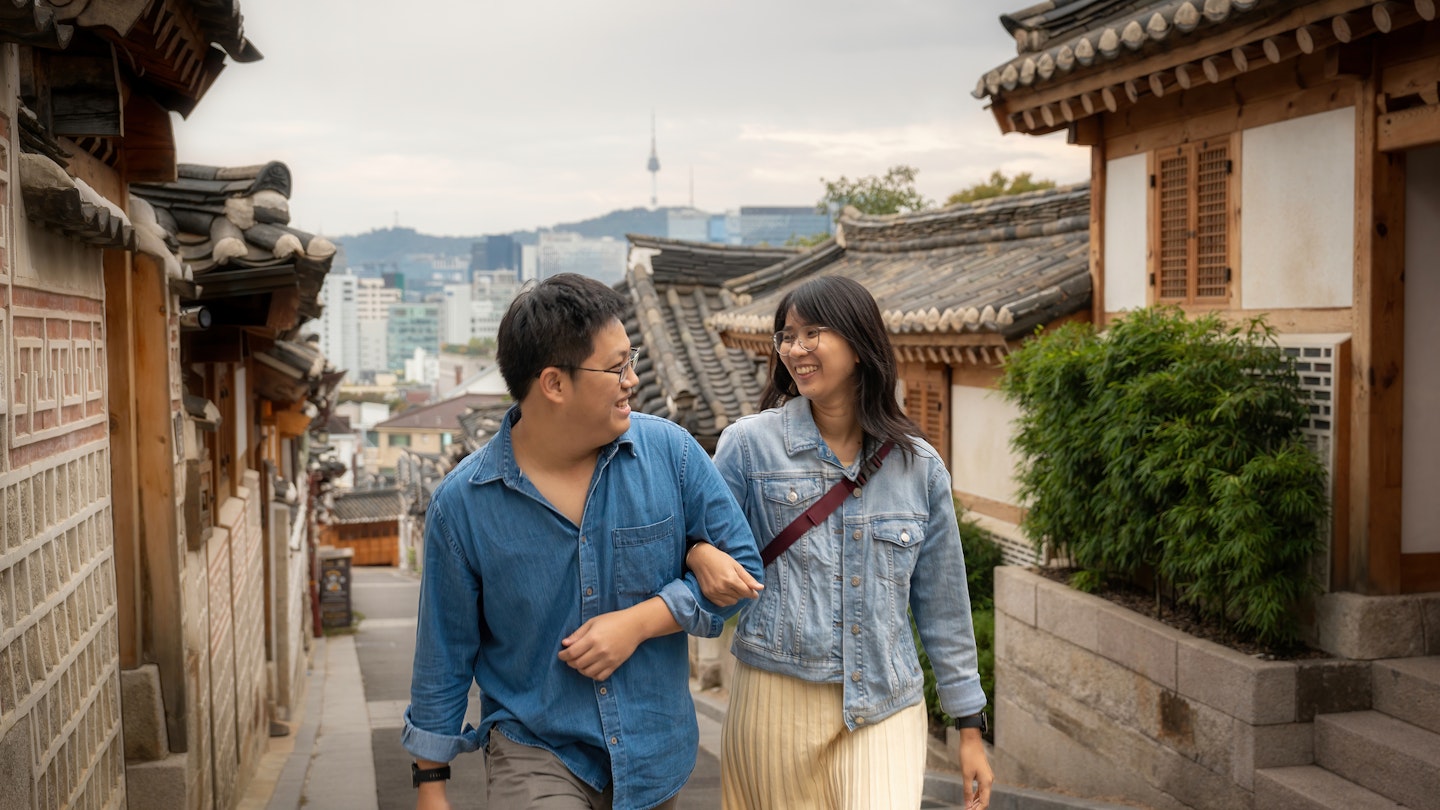Ultimate Budget Guide to Seoul, South Korea
Don’t be alarmed by the tone of South Korean hits like Parasite and Squid Game: a visit to the capital city isn’t synonymous with economic malaise.
However, Seoul can indeed be stressfully expensive. With this guide to daily costs and money-saving tips, you won’t be dropping millions of won at glittering nightclubs and five-star restaurants. Instead, you’ll learn how to have a fabulous trip to Seoul on a budget.
Daily Costs in Seoul
- Dorm bed in a hostel: ₩20,000–₩40,000
- Basic room for two: from ₩80,000
- Self-catering apartment (including Airbnb): from ₩100,000
- Hanok (traditional Korean house) stays: from ₩120,000
- Public transport ticket (one subway ride): ₩1,400
- Coffee: ₩5,000
- Gimbap (Korean rice wrapped in seaweed): ₩4,000
- Dinner for two: from ₩30,000
- Beer at the bar: from ₩5,000
Visit in the Fall
Visiting Seoul at the right time can help your budget significantly. June, July, and August are South Korea’s high season for travel, wherein hotels and airfare can be 10% to 25% more expensive than in the off-season. Although winter or spring can be equally cost-effective, the bitter cold of winter limits free outdoor activities, and spring often coincides with yellow dust season.
Consequently, fall is not only considered Korea’s most beautiful season, but it’s also the ideal time to enjoy hiking in the mountains and attending free festivals in the capital.
Take Advantage of Culture Day
The last Wednesday of every month is designated as Culture Day, which offers discounts or free admission to over 2,000 cultural activities and attractions across South Korea. Both locals and visitors can benefit from discounted tickets to various museums and attractions.
Explore Seoul’s Vibrant Neighborhoods
Visitors to Seoul often discover that the best experiences involve narrow alleyways, vibrant neighborhoods, and independent cafes. While popular attractions such as N Seoul Tower can be enjoyable, the admission fees can quickly add up. Your time and money are usually better spent getting to know the neighborhoods.
Focus on exploring picturesque areas like Bukchon Hanok Village, Euljiro, and Seongsu-dong. These neighborhoods offer a glimpse into both historic and contemporary Seoul life, each telling a unique story through their architecture and ambiance.
Beware of Nighttime Taxi Surcharges
As the Seoul Metro doesn’t operate from midnight to 5:30 a.m., many people depend on taxis, which come with hefty surcharges after 10 p.m. For most of the day, taxi fares start at ₩4,800 for the first 2 km, but if you’re traveling between 10 and 11 p.m., expect the base fare to increase to ₩5,800.
Keep in mind, buses run during the night, so familiarize yourself with the evening bus schedule to save on transportation costs.
Discover Seoul Pass
The Discover Seoul Pass provides free or discounted access to many attractions and methods of transportation. Weighing the costs against your plans can help you determine if it’s worth your investment, especially if you’re looking at major attractions.
Claim Your Tax Refund
In South Korea, all prices include a 10% sales tax, which is refundable for tourists. To claim your refund, present your receipt and passport at a tax-refund kiosk in-store or at the airport—typically, airport workers are more familiar with the process.
Budget-Friendly Convenience Stores
Convenience stores in Seoul are a treasure for budget travelers. They offer everything from packaged meals to snacks at reasonable prices. Even in upscale neighborhoods, you can grab a quick, low-cost meal or beverage.
Eat Like a Local
While Korean barbecue is gaining international popularity, it remains a luxury. Instead, seek out baekban restaurants that provide home-style cooking with a main dish and several sides. Traditional markets also offer delicious Korean-style noodles at affordable prices.
Select the Right Neighborhood for Your Stay
Your choice of neighborhood in Seoul should depend on your length of stay and interests. For short visits, downtown areas like Jongno and Euljiro offer affordable accommodation while being close to major tourist spots. For nightlife enthusiasts, areas such as Itaewon are ideal due to their proximity to clubs and bars.
Carry Cash
Although credit cards are widely accepted, some smaller shops may have fees for card transactions. Moreover, paying with cash might assist in negotiating prices in traditional markets, where vendors are generally more flexible.
This guide offers practical advice for experiencing Seoul, South Korea, without straining your budget. With this information, your visit can be both memorable and financially manageable.





